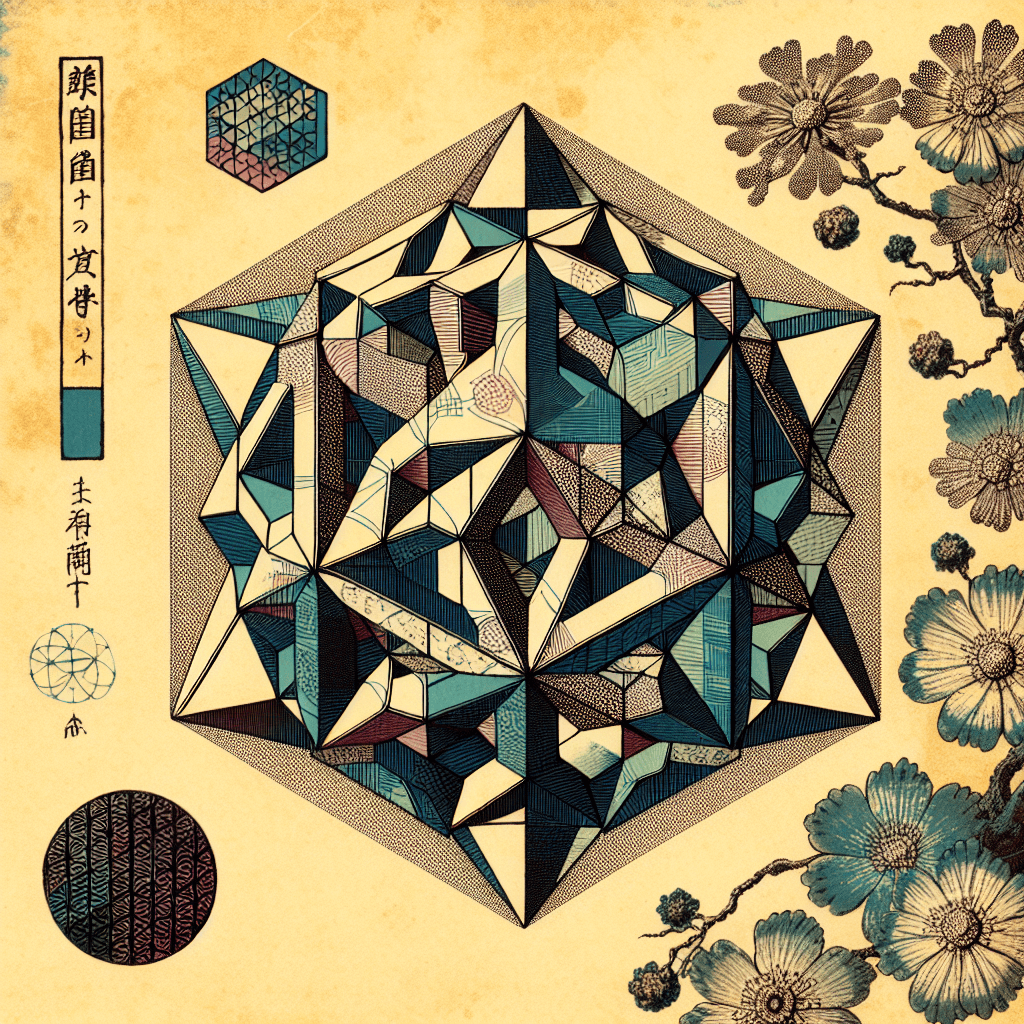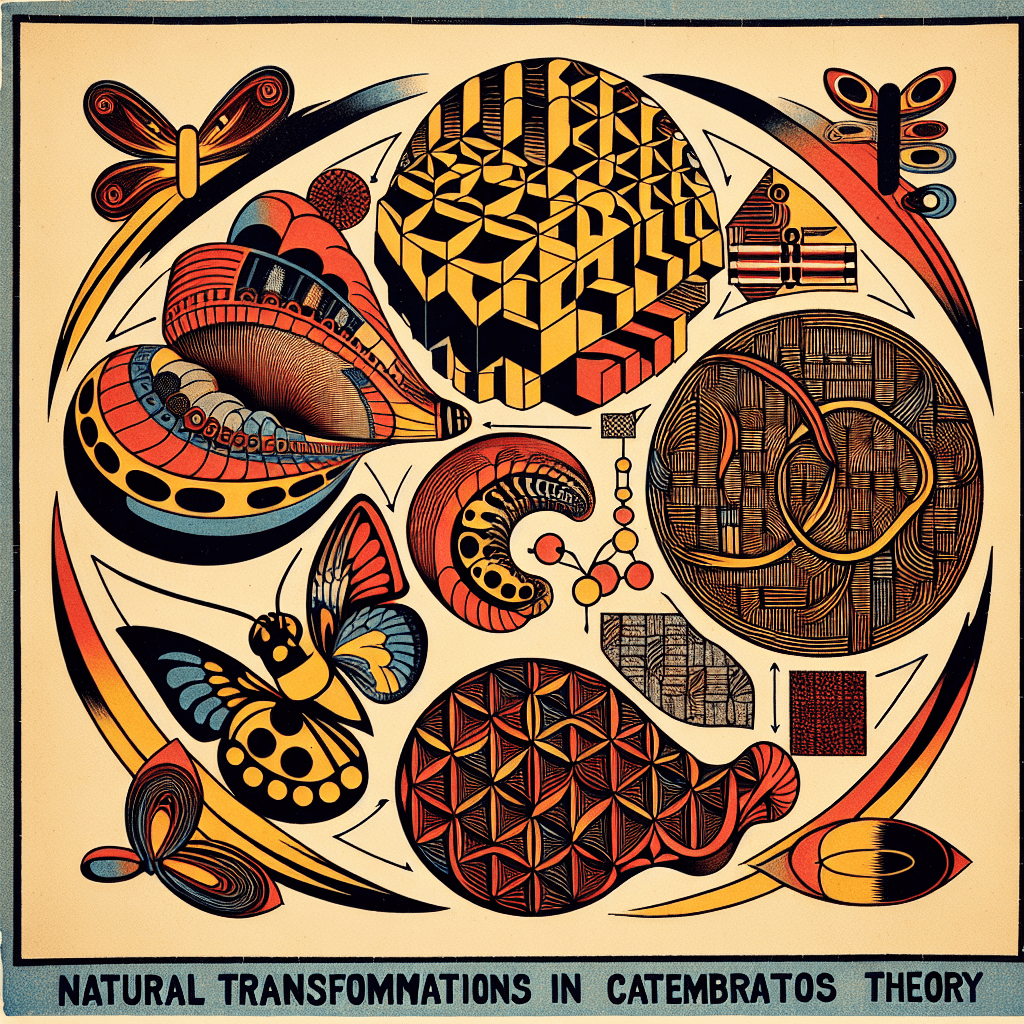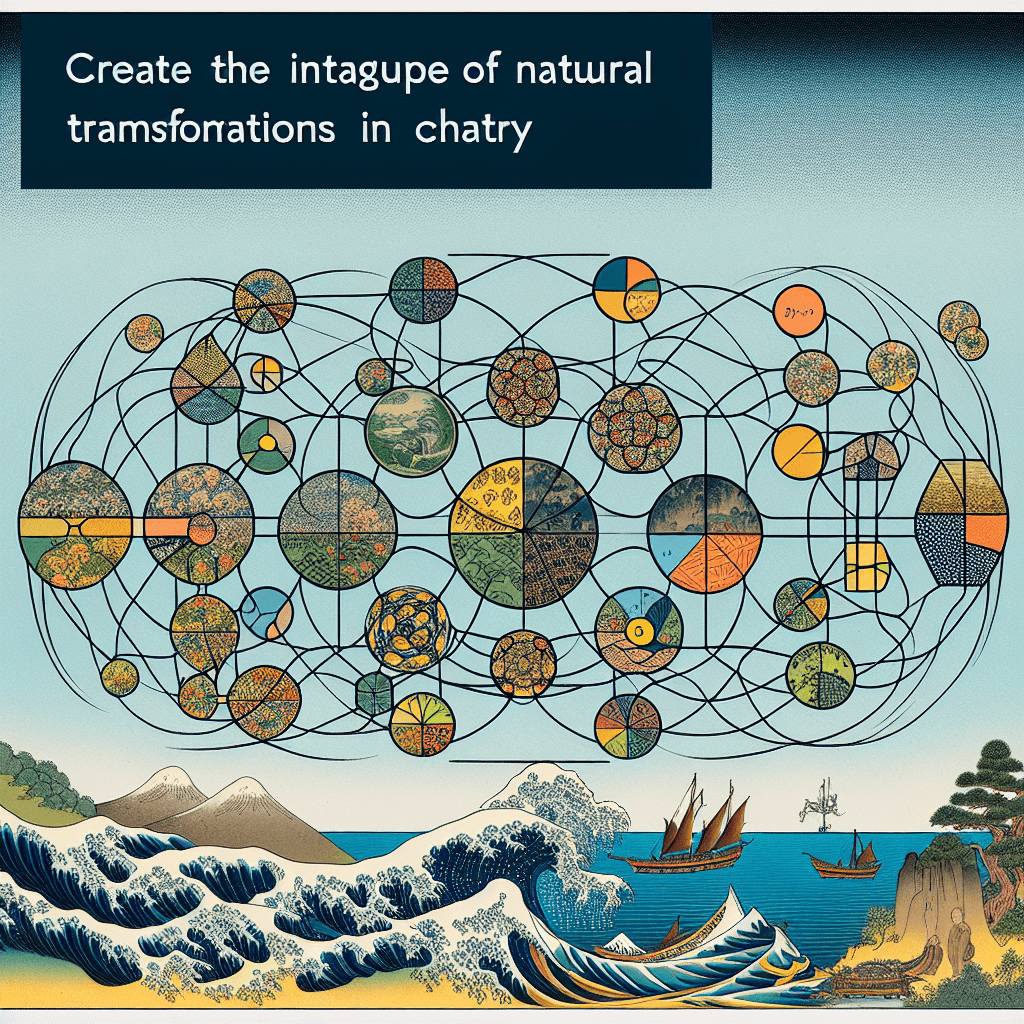The Icosahedron: Exploring the Category of Categories
syndu | Sept. 1, 2024, 10:56 p.m.

### The Icosahedron: Exploring the Category of Categories
#### Introduction
Category theory, often described as *"the mathematics of mathematics,"* provides a unifying framework for understanding and connecting various mathematical structures. One of the more abstract and intriguing concepts within category theory is the **category of categories**, where objects are categories themselves, and morphisms are functors between these categories. To make this concept more accessible and engaging, we will use the icosahedron as a metaphor to illustrate the category of categories.
#### The Icosahedron Metaphor
An icosahedron is a polyhedron with 20 triangular faces, 30 edges, and 12 vertices. This geometric shape can serve as a powerful metaphor for understanding the category of categories. Each vertex of the icosahedron represents a category, and the edges connecting these vertices represent functors, which are the morphisms between categories.
**Visual Aid**:

**Explanation**:
- **Vertices as Categories**: Each vertex of the icosahedron represents a category. These categories can be thought of as collections of objects and morphisms.
- **Edges as Functors**: The edges connecting the vertices represent functors, which map between categories while preserving their structure.
- **Faces as Compositions**: The triangular faces of the icosahedron represent the composition of functors, illustrating how functors can be combined to form new functors.
#### Components of the Category of Categories
In category theory, a **category** consists of objects and morphisms (arrows) that describe relationships between these objects. The **category of categories** takes this concept a step further:
1. **Objects**: In the category of categories, the objects are themselves categories. Each category consists of its own objects and morphisms.
2. **Morphisms**: The morphisms between these objects are functors, which map between categories while preserving their structure.
These components must satisfy two key properties:
1. **Composition**: For any two functors \( F: \mathcal{C} \rightarrow \mathcal{D} \) and \( G: \mathcal{D} \rightarrow \mathcal{E} \), there exists a composition \( G \circ F: \mathcal{C} \rightarrow \mathcal{E} \).
2. **Identity**: For each category \( \mathcal{C} \), there exists an identity functor \( \text{id}_{\mathcal{C}}: \mathcal{C} \rightarrow \mathcal{C} \) that acts as a neutral element for composition.
#### Understanding Functors
A **functor** is a type of mapping between categories that preserves the structure of the categories involved. Formally, a functor \( F \) from a category \( \mathcal{C} \) to a category \( \mathcal{D} \) consists of two components:
1. **Object Mapping**: For each object \( X \) in \( \mathcal{C} \), there is an object \( F(X) \) in \( \mathcal{D} \).
2. **Morphism Mapping**: For each morphism \( f: X \rightarrow Y \) in \( \mathcal{C} \), there is a morphism \( F(f): F(X) \rightarrow F(Y) \) in \( \mathcal{D} \).
These mappings must satisfy two key properties:
1. **Preservation of Composition**: For any two composable morphisms \( f: X \rightarrow Y \) and \( g: Y \rightarrow Z \) in \( \mathcal{C} \), the functor must satisfy \( F(g \circ f) = F(g) \circ F(f) \).
2. **Preservation of Identity**: For any object \( X \) in \( \mathcal{C} \), the functor must satisfy \( F(\text{id}_X) = \text{id}_{F(X)} \).
#### Applications in Mathematics
The category of categories provides a framework for understanding higher-level structures and relationships between different mathematical categories. Some applications include:
1. **Higher Category Theory**: The study of categories of categories leads to higher category theory, where one considers categories of categories of categories, and so on. This is crucial for understanding complex mathematical structures and their interrelations.
2. **Homotopy Theory**: In algebraic topology, the category of categories is used to study homotopy theory, which deals with the properties of spaces that are invariant under continuous deformations.
#### Applications in Theoretical Computer Science
In theoretical computer science, the category of categories is used in the study of type theory, functional programming, and the semantics of programming languages. Some applications include:
1. **Type Theory**: The category of categories provides a way to model type systems in programming languages, where types can be seen as objects and type transformations as morphisms.
2. **Functional Programming**: In functional programming, functors and higher-order functions can be understood using the category of categories, providing a robust framework for reasoning about program behavior and transformations.
3. **Semantics of Programming Languages**: The category of categories is used to define the semantics of programming languages, allowing for a formal understanding of how programs behave and interact.
#### Conclusion
The category of categories is a fundamental concept in category theory, providing a way to describe relationships and transformations between categories themselves. By using the icosahedron as a metaphor, we can visualize and understand these abstract concepts more intuitively.
"Category theory, often described as 'the mathematics of mathematics,' provides a unifying framework for understanding and connecting various mathematical structures."This foundational understanding is crucial for exploring more advanced topics in category theory and its applications across various fields. #### Next Steps for Blog Series To delve deeper into category theory, we will continue our blog series with the following topics: 1. Natural Transformations: Connecting Functors 2. Limits and Colimits: Universal Properties in Categories 3. Monoids and Monoidal Categories: Algebraic Structures in Category Theory 4. Conclusion: The Power of Category Theory and Godai Metaphors #### Action Items 1. **Research and Understand the Topic**: Gain a deep understanding of each specific topic. 2. **Draft the Blog Post**: Write detailed and engaging content using metaphors and visual aids. 3. **Create Visual Aids**: Develop visual aids to illustrate the concepts. 4. **Generate a Captivating Title**: Create an informative and intriguing title. 5. **Review and Edit**: Proofread and edit for clarity and correctness. 6. **Publish and Promote**: Publish the blog post and promote it to reach the target audience. **Goal**: To create a comprehensive and engaging content series that attracts and inspires readers, encouraging them to explore category theory through relatable and visual metaphors. #### Promotion Plan 1. **Social Media**: Share the blog post on platforms like Twitter, LinkedIn, and Facebook with engaging captions and relevant hashtags. 2. **Newsletters**: Include the blog post in the next edition of our newsletter to reach our subscribers. 3. **Online Communities**: Post the blog link in relevant forums and communities such as Reddit, Stack Exchange, and specialized category theory groups. 4. **Collaborations**: Reach out to influencers and experts in the field to share the blog post with their audience. 5. **SEO Optimization**: Ensure the blog post is optimized for search engines to attract organic traffic. By following this plan, we aim to maximize the reach and impact of our blog post, engaging a wide audience interested in category theory and its applications.

